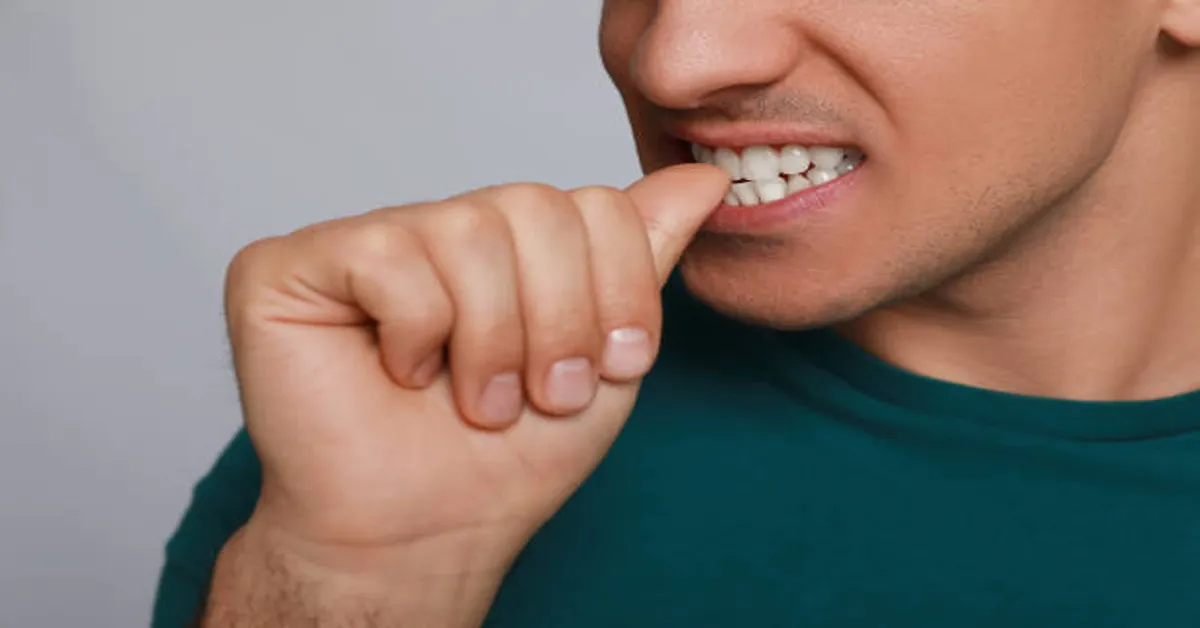Micro biting is a term that, while not always widely recognized in mainstream discourse, represents a real and often overlooked behavioral phenomenon. It involves small, repetitive biting actions that a person directs at themselves or others, often unconsciously. These actions may be physical, such as biting the skin, nails, lips, or the insides of the cheeks. Sometimes, micro biting can even manifest as part of grooming or stress-relieving behavior. In more advanced psychological discussions, micro biting is sometimes categorized under body-focused repetitive behaviors (BFRBs), but even outside clinical definitions, it is essential to understand how these minor bites can have broader physical, psychological, and social consequences.
This article aims to offer an in-depth exploration of micro biting—what it is, why it happens, the science behind it, its effects, and the ways one can manage or prevent it. Whether you’ve noticed this habit in yourself, your child, or someone you care for, understanding micro biting is a critical first step toward addressing it in a healthy, sustainable way.
What is Micro Biting?
Micro biting refers to habitual, often involuntary, tiny biting actions typically directed at one’s own body or sometimes at objects. It’s called “micro” because the actions are subtle, repeated many times throughout the day, and are rarely aggressive or overtly harmful in a single instance. Yet, over time, the cumulative effects can be both physically damaging and emotionally taxing.
Common manifestations include:
- Biting nails or cuticles excessively
- Chewing or biting the inside of the cheeks
- Nibbling the lips or tongue
- Light biting of fingers or knuckles
- Biting the skin on the face or arms
It is important not to confuse micro biting with purposeful self-harm, although in some rare cases, they may overlap. Micro biting often serves a different function—usually to relieve tension, manage anxiety, cope with boredom, or self-soothe during periods of overstimulation or under-stimulation.
Causes of Micro Biting
The reasons behind micro biting are multifactorial, involving a mix of psychological, neurological, behavioral, and sometimes environmental triggers. Below are some of the primary causes:
1. Psychological Stress and Anxiety
One of the most common causes of micro biting is emotional stress. Just like nail-biting or hair-twirling, micro biting can act as a self-soothing mechanism when the mind is overwhelmed. During episodes of anxiety, the body often seeks a repetitive motion or tactile feedback to calm down. The physical act of biting may offer a sense of control or relief, albeit temporary.
2. Habitual Conditioning
In many cases, micro biting begins as an unconscious habit during childhood and persists into adulthood. These actions may become so ingrained in one’s daily routines that the person isn’t even aware they’re doing it. Conditioning occurs when the biting behavior consistently provides a perceived benefit (e.g., stress relief), reinforcing the habit through repetition.
3. Neurological Factors
Some individuals, particularly those with Attention Deficit Hyperactivity Disorder (ADHD), Autism Spectrum Disorder (ASD), or Obsessive-Compulsive Disorder (OCD), may engage in micro biting due to underlying neurological patterns. In these cases, it is part of a broader framework of sensory processing needs or compulsive behaviors.
4. Oral Fixation
Oral fixation is a term from Freudian psychology that refers to the continued use of the mouth as a source of gratification beyond infancy. People who experience oral fixation may engage in behaviors like constant chewing, nail-biting, or lip-biting, and micro biting can emerge as a symptom of that unresolved psychological pattern.
5. Environmental Triggers and Boredom
Idle time, lack of engagement, or sensory dullness can lead people to seek stimulation. Micro biting may emerge in such moments as a way to break the monotony. For instance, students may bite their cheeks during long lectures, or employees may chew their fingers during long meetings.
The Physical Effects of Micro Biting
Though the action of micro biting may seem harmless due to its small scale, repeated acts over time can lead to significant physical consequences. These effects vary depending on the area targeted.
1. Skin Damage
Continuous biting of the skin can lead to:
- Redness and swelling
- Open wounds or sores
- Infections, especially if the skin is broken and unclean fingers or objects are involved
- Scarring or skin discoloration over time
2. Oral Health Issues
For those who bite the insides of their cheeks or lips:
- Sores and ulcers may form
- Long-term tissue damage can occur
- Pain during eating or speaking may develop
- Risk of oral infections increases
3. Nail and Cuticle Problems
Nail biting, a common form of micro biting, can cause:
- Deformed nail growth
- Damaged cuticles
- Increased risk of paronychia (nail infection)
- Transmission of pathogens from fingers to mouth
4. Dental Problems
Consistent biting on objects like pens or fingernails can result in:
- Tooth enamel erosion
- Misalignment or chipping of teeth
- Jaw discomfort or strain from repetitive clenching
Psychological and Social Impact
Beyond physical consequences, micro biting also carries significant psychological and social weight. The behavior, especially when done in public, can be perceived as inappropriate or socially off-putting. This can lead to feelings of embarrassment or shame, especially if others point it out.
Individuals who engage in micro biting often report:
- Lower self-esteem due to visible damage (e.g., scabs, bitten nails)
- Social anxiety from fear of judgment
- Increased stress from the inability to control the habit
- Compulsive thoughts or guilt after biting episodes
In some cases, the psychological burden may become heavier than the physical damage. That is why addressing the root causes and offering holistic care is essential for lasting change.
Identifying Triggers
Recognizing what leads to micro biting is the first and most critical step in managing it. Triggers may include:
- Emotional states: stress, anger, anxiety, boredom
- Environmental contexts: being alone, being in a crowd, waiting, working under pressure
- Time of day: late-night hours, idle moments, just before sleep
- Physical cues: dry skin, rough lips, jagged nails
Maintaining a “trigger journal” can be an excellent strategy. By noting when and where the behavior occurs, patterns can be identified and targeted for intervention.
Preventive Measures and Behavior Modification Techniques
Changing any habitual behavior takes time, patience, and the right tools. Below are proven strategies to help reduce or eliminate micro biting.
1. Cognitive Behavioral Therapy (CBT)
CBT is a widely accepted psychological approach that helps individuals understand the link between their thoughts, behaviors, and emotions. For micro biting, CBT may include:
- Identifying harmful thought patterns
- Learning stress management techniques
- Replacing biting with healthier coping mechanisms
2. Habit Reversal Training
This involves four main steps:
- Awareness training: Recognizing when biting occurs
- Competing response: Replacing biting with an alternative, like clenching a fist or using a stress ball
- Motivation building: Reviewing the negative effects to build incentive for change
- Support systems: Involving family or friends to reinforce positive behaviors
3. Physical Barriers
Creating a physical obstruction to prevent biting can be effective. This might include:
- Wearing gloves or bandages
- Using bitter-tasting nail polish
- Applying lip balm frequently to reduce dryness and the urge to bite
4. Self-Care and Skin/Nail Maintenance
When nails and skin are well-maintained, the temptation to bite often reduces. Regular trimming, moisturizing, and nail care are helpful. Healthy skin is less likely to become a target.
5. Mindfulness and Stress Reduction
Meditation, deep breathing, journaling, and yoga help reduce the underlying anxiety or boredom that often leads to micro biting. Practicing mindfulness increases self-awareness and the ability to pause before reacting.
Micro Biting in Children and Adolescents
Micro biting is particularly common among children and teenagers, often as a form of self-soothing. Parents should approach the behavior with compassion and curiosity rather than punishment. In children:
- It may be a temporary phase, especially during stressful life changes
- Overreaction from adults can lead to shame and secrecy
- Positive reinforcement, visual reminders, and stress reduction strategies often work best
- Pediatricians or child psychologists can provide additional support if needed
When to Seek Professional Help
While occasional micro biting isn’t usually a cause for concern, chronic or harmful behaviors may warrant professional attention. You should consider consulting a doctor, psychologist, or dermatologist if:
- The skin is bleeding, infected, or scarred
- The habit interferes with daily functioning
- There’s emotional distress associated with the behavior
- You suspect an underlying mental health issue like OCD, ADHD, or anxiety
Early intervention can prevent long-term damage and open pathways to healthier coping mechanisms.
Micro Biting vs. Other Repetitive Behaviors
It’s essential to distinguish micro biting from similar but distinct behaviors. For instance:
- Dermatillomania is compulsive skin-picking, often associated with anxiety or OCD.
- Trichotillomania involves pulling out hair, also categorized under BFRBs.
- Bruxism is involuntary teeth grinding, often occurring during sleep.
Although they may appear similar, each has unique characteristics and requires a tailored treatment plan.
Conclusion: Addressing Micro Biting for Holistic Wellbeing
Micro biting, while often considered a “minor” habit, holds the potential to affect various aspects of a person’s life—from physical appearance and health to psychological well-being and social interactions. Understanding its roots, identifying patterns, and committing to gradual behavioral change are key steps in overcoming it. Whether through therapy, mindfulness, or daily habit tracking, lasting improvement is both possible and achievable.
It’s essential to approach micro biting with empathy and awareness. It is not a weakness or a lack of willpower but often a signal that the body or mind is seeking relief. By replacing the behavior with healthier alternatives and providing yourself or your loved ones with the right support, transformation can occur—not just in appearance, but in confidence, calm, and clarity.
ALSO READ: RePDF: The Ultimate Guide to Managing and Editing PDF Documents
FAQs
1. What is micro biting and is it harmful?
Micro biting is the habitual act of lightly biting parts of the body like nails, skin, or lips. While often subtle, it can lead to physical damage, infections, or psychological stress if persistent and left unaddressed.
2. Why do people engage in micro biting?
Common reasons include stress, anxiety, boredom, neurological patterns, or habit formation from childhood. It often serves as a self-soothing behavior, even if done unconsciously.
3. Can micro biting be treated or stopped?
Yes. With awareness, behavior modification techniques like habit reversal training, cognitive behavioral therapy, and mindfulness practices, many people can reduce or eliminate the habit over time.
4. Is micro biting the same as self-harm?
Not necessarily. While both involve body-directed actions, micro biting is typically unintentional and serves different psychological needs than self-harming behaviors, which are often more severe and deliberate.
5. When should I see a professional about micro biting?
If the habit causes visible damage, emotional distress, or interferes with daily functioning, consulting a therapist, doctor, or dermatologist is recommended for proper assessment and care.









